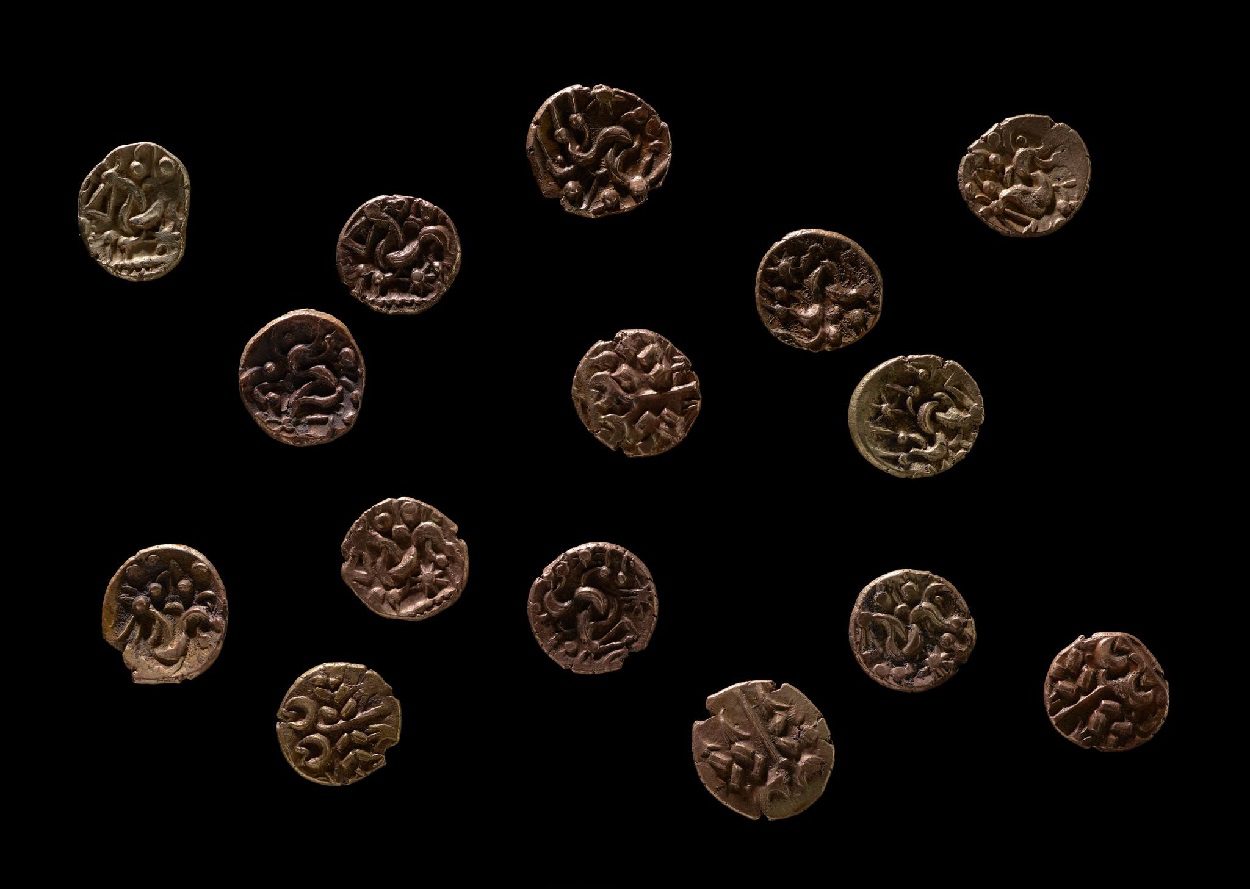An Iron Age hoard of gold coins found in Anglesey has been declared treasure by the HM Senior Coroner for North West Wales.
The hoard was found near the village of Llangoed, located on the island of Anglesey in north-west Wales.
Upon determining the significance of the find, detectorists, Peter Cockton, Lloyd Roberts and Tim Watson, reported the discovery to the Portable Antiquities Scheme, a programme to record the increasing numbers of small finds of archaeological interest found by members of the public in the UK.
The hoard consists of 15 gold coins known as staters, which were struck between 60 BC and 20 BC at three different mints across what is now present-day Lincolnshire. They are attributed to the Corieltavi tribe, who inhabited the geographical area of the modern East Midlands during the late Iron Age. The Corieltauvi were primarily an agricultural society that started minting inscribed coins during the early 1st century BC.
Sean Derby, Historic Environment Record Archaeologist and PAS Cymru Finds Recording Officer at Gwynedd Archaeological Trust, said: “This hoard is a fantastic example of the rich archaeological landscape that exists in North-West Wales. While the immediate vicinity of the find did not yield any clues as to the find’s origin, the findspot lies in an area of known prehistoric and early Roman activity and helps increase our understanding of this region. I’m very grateful to the finder and landowner for reporting the finds and allowing us to visit the site.”
The design of each of the coins is very stylised, drawing inspiration from the gold coins of Phillip II of Macedonia. Macedonian coins depict the bust of Apollo on the front (obverse) and a chariot drawn by two horses with a charioteer on the back (reverse).
In the case of the staters, the obverse exhibits Apollo’s wreath and hair in an artistic manner, while the reverse showcases a stylized triangular-headed horse, accompanied by a variety of surrounding symbols.
Header Image Credit : Amgueddfa Cymru





